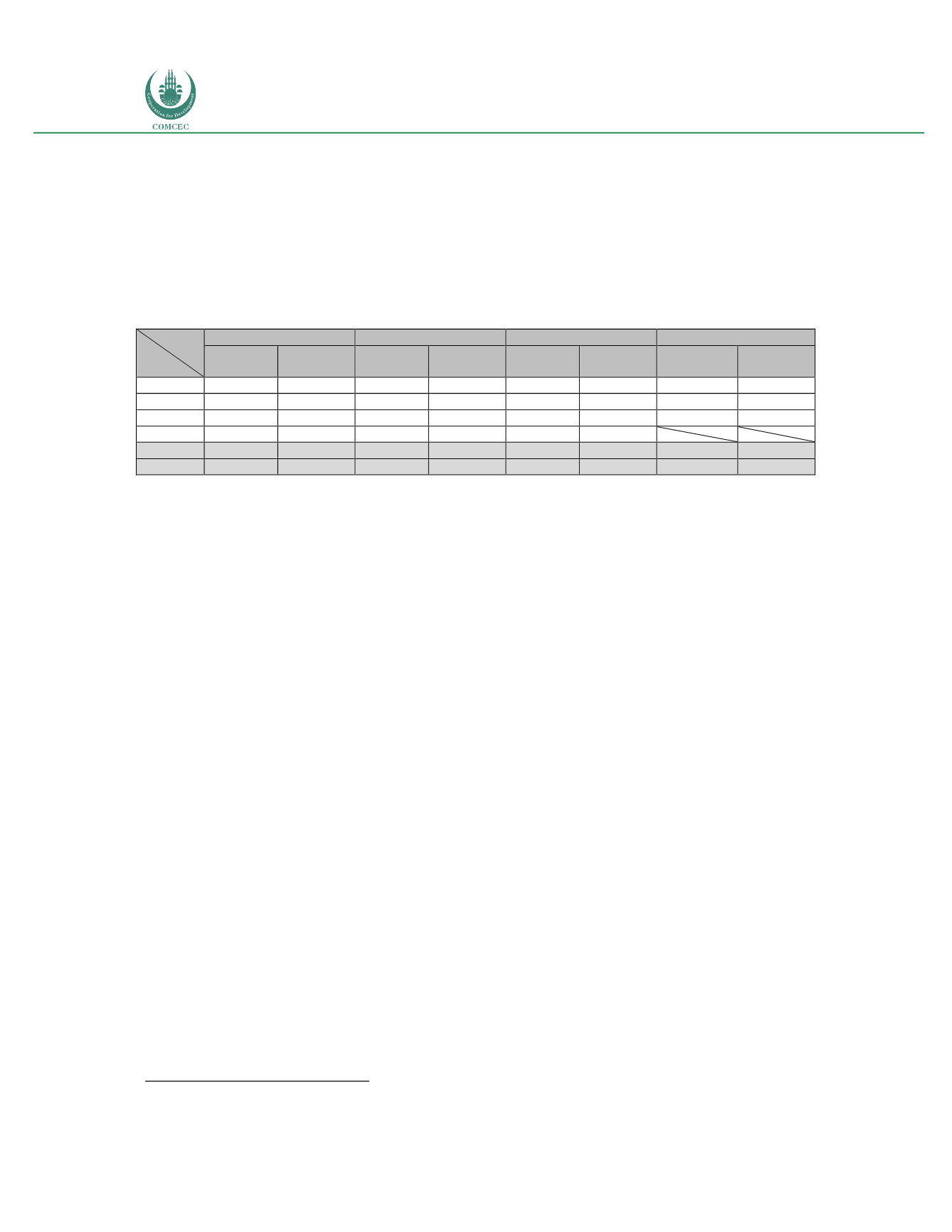

Increasing Broadband Internet Penetration
In the OIC Member Countries
146
of the joint venture. This would give Tele2 a fully diluted economic interest of 31%, taking into
account Asianet’s 18% earn out.
103
The transaction combined Altel 4G presence with Tele2
marketing expertise.
The exit of TeliaSonera and the consolidation of Tele2 and Altel have resulted in an increase in
the HHI concentration index in mobile broadband (see table 84).
Table 84: Mobile broadband market shares (by subscribers) (2011-2016)
2011
2012
2015
2016
Lines
Share
(%)
Lines
Share
(%)
Lines
Share
(%)
Lines
Share
(%)
Altel
971,100
15.60 667,000
9.70 1,035,000
11.00 2,874,000
23.00
Beeline 3,808,000
61.17 3,031,000
44.08 3,763,000
40.00 4,998,000
40.00
K-Cell
1,289,000
20.71 2,525,000
36.73 3,575,000
38.00 4,623,000
37.00
Tele2
349,000
5.61 652,000
9.49 1,129,000
12.00
TOTAL 6,225,000
100 6,875,600
100 9,406,900
100 12,495,374
100
HHI
4,446
3,476
3,309
3,498
Source: Kazaktelecom Annual reports; GSMA Intelligence; International Telecommunications Union; Telecom Advisory
Services analysis
Between 2011 and 2015, the HHI industry concentration index was gradually declining as a
result of increasing competition primarily between Beeline and K-Cell. The pressure resulting
from price declines and the economies of scale advantage of Beeline and K-Cell on Altel and
Tele2 was a stimulus towards consolidation. The consolidation between the two smaller
players has resulted in an increase in the Herfindahl-Hirschman Index from 3,309 to 3,498.
However, this value is still within the range of acceptable competition. Some analysts predict
that the resulting industry concentration will reestablish some price discipline and that prices
will start increasing, and that unlimited plans are going to be phased out.
State of competition in the broadband market
As a result of the consolidations in mobile broadband and diversifications into fixed
broadband, the Kazakh market is composed of two convergent players (Kazakhtelecom and
Vimpelcom), one pure play wireless (K-cell), and several fixed broadband carriers focusing
primarily on the business market.
Given the saturation reached in the wireless market (penetration rates of approximately
158%) and the high adoption in broadband, the market has plateaued. Additionally, intense
price competition, coupled with mobile number portability has had an impact on carrier
profitability. In consequence, it is highly unlikely that new entrants will venture into the
Kazakh market in the near term.
Technologies and trends in the broadband market
The fixed technological infrastructure utilized for delivering broadband services in Kazakhstan
consists of a mix of ADSL, FTTB (Fiber to the Building), FTTH (Fiber to the Home), and fixed
103
Telegeography. Tele2 and Altel to combine Kazakh operations. 4 Nov 2015
















